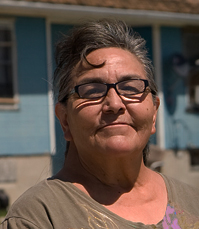|
|

 |
Chief of the Ponca, a small Indian nation related to the Omaha, Standing Bear became famous for bringing a lawsuit against the United States Army for forcibly removing Indian people from their homelands. The Ponca had tried to deal peacefully with the government and in 1858 signed a treaty giving up all of their land except for the land around the Niobrara River in Nebraska. By mistake, the government then gave this land to the Sioux in the 1868 Ft. Laramie Treaty. The Sioux began driving the Ponca off their land.
In 1875 the government admitted its mistake and suggested that the Ponca move to Indian Territory in Oklahoma. Standing Bear and several other Ponca leaders accompanied agents of the Office of Indian Affairs to Oklahoma to pick out a site. The Indian leaders refused all locations finding the arid land uninhabitable. The frustrated agents told Standing Bear that if they wished to return home they could walk the 500 miles and they did just that.
Upon returning to Nebraska they found many Ponca had already been moved to Oklahoma. By May of 1877 six hundred Ponca including Standing Bear were forced at bayonet point to walk to the Indian Territory. Several died along the way. After a year in Oklahoma one third of the Ponca had died of disease and starvation, including Standing Bear’s son. In the middle of winter Standing Bear led a troop of sixty-six Ponca and set out on foot toward their Nebraska home. They walked for two months, finally taking shelter on land owned by the Omaha. In the spring the army arrived to force the Ponca to return to Oklahoma. While Standing Bear and the rest Ponca camped outside the town of Omaha the residents of Omaha obtained a writ of habeas corpus on behalf of the Ponca and took the army to federal court.
In his ruling on the case Judge Elmer Dundy ruled, “An Indian is a person within the meaning of the law, and there is no law giving the Army authority to forcibly remove Indians from their lands.” The Army ignored the ruling except as it pertained to Standing Bear. His brother Big Snake tried to move from the Ponca Reservation in Oklahoma to one occupied by the Cheyenne. Indian agent William Whiteman ordered a detail to arrest him. When Big Snake resisted he was shot and killed. Following a U.S. Senate investigation of Big Snake’s death, Standing Bear and the Ponca were allowed to return to Nebraska. Standing Bear traveled the country telling his story through the Omaha interpreter Susette La Flesche. He died in his homeland along the Niobrara River in 1908. |
|
|















